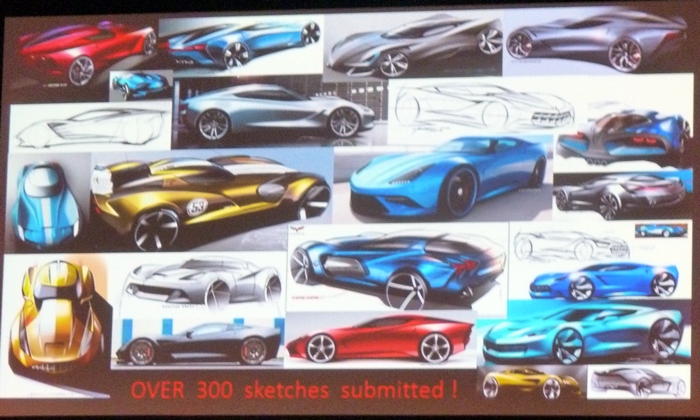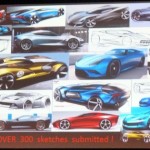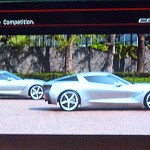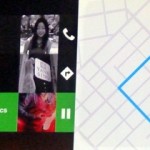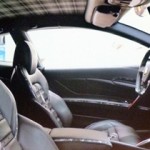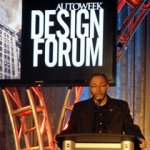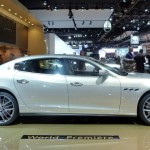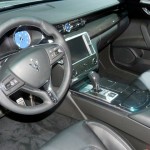Each year following NAIAS (the Detroit auto show), AutoWeek puts on a design forum where the general public can hear car designers discuss their work. This year the program included the exterior design manager for the new Corvette, the executive in charge of Alfa, Lancia, and Maserati design, the well-dressed head of a design consultancy, and a pair of executives for a high-tech start-up that aims to reinvent in-car information technology.
For me, the first presenter was easily the most interesting. Kirk Bennion reviewed how the design of the C7 Corvette was developed through an international competition, clay models, the wind tunnel, and computer analysis. The current process combines traditional methods with advanced technology. As is often the case, the final design combined elements from two finalists. It also sought to both retain clear ties to earlier Corvettes while also appealing to people outside the Corvette community, and even outside North America. Not everyone likes the appearance of the new car’s many air intakes, but they’re all functional, either cooling key components or reducing lift.
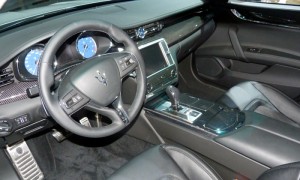 Marco Tencone reviewed the development of the new Maserati Quattroporte. He identified how the new car retained traditional Maserati design cues while meeting new functional requirements. My main takeaway from his presentation: the new design isn’t as curvy because they wanted to broaden the Quattroporte’s appeal, make the longer exterior seem smaller than it is, make the interior seem roomier than it is, and increase the actual amount of space for people and luggage. In other words, it’s still clearly a Maserati, and it is still attractive, but it has become more like mainstream large luxury sedans. One interesting detail: the new, more horizontal instrument panel isn’t as simple as it appears at first glance. Its design is based on layers, to show the real thickness of the authentic materials used to trim it.
Marco Tencone reviewed the development of the new Maserati Quattroporte. He identified how the new car retained traditional Maserati design cues while meeting new functional requirements. My main takeaway from his presentation: the new design isn’t as curvy because they wanted to broaden the Quattroporte’s appeal, make the longer exterior seem smaller than it is, make the interior seem roomier than it is, and increase the actual amount of space for people and luggage. In other words, it’s still clearly a Maserati, and it is still attractive, but it has become more like mainstream large luxury sedans. One interesting detail: the new, more horizontal instrument panel isn’t as simple as it appears at first glance. Its design is based on layers, to show the real thickness of the authentic materials used to trim it.
Lapo Elkann, part of the family that controls FIAT and occupant of many “best dressed” lists, described his work as a FIAT executive and more recently as the entrepreneurial head (“I’m not a designer”) of a design consultancy. At FIAT he participated in the reinvention of the 500. In recent years his consultancy has worked with Ferrari and FIAT to provide customized cars. The level of personal customization can get extreme with Ferraris. Some projects of the “Tailor Made Program” upholstered the cars with ultra-premium suit cloth. With FIAT, the major product so far has been the 500 by Gucci.
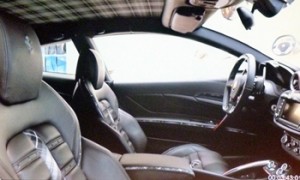 This presentation flicked quickly from slide to slide, providing interesting visuals but not going into much depth. I’ve long been interested in how car buyers might be more deeply involved in the creation of the products. But, except in the most extreme, and extremely expensive, cases, Elkann’s work to date hasn’t gained much ground here. In the end, Lapo and the highly talented people working for him ensure that the final product will be tasteful, good taste being a key competitive advantage of Italians. They protect the brand. “When the customer has crazy ideas, we bring him back in the right direction. If the customer wants loud and flashy, we won’t be the ones doing it.”
This presentation flicked quickly from slide to slide, providing interesting visuals but not going into much depth. I’ve long been interested in how car buyers might be more deeply involved in the creation of the products. But, except in the most extreme, and extremely expensive, cases, Elkann’s work to date hasn’t gained much ground here. In the end, Lapo and the highly talented people working for him ensure that the final product will be tasteful, good taste being a key competitive advantage of Italians. They protect the brand. “When the customer has crazy ideas, we bring him back in the right direction. If the customer wants loud and flashy, we won’t be the ones doing it.”
I never did figure out exactly what the pair of CloudCar executives were talking about as they completed one another’s sentences in a seemingly casual but no doubt intensively rehearsed presentation. They are developing a nav-based tool operated primarily by voice that will continuously study your behavior so that it might anticipate your needs. For example, if it noticed you’re running late for an appointment, it will send a note. The goal is to increase the services provided while reducing the possibility for distracted driving and driver anxiety. I can’t report much more, because the presentation was short on details. Only basic screens that might or might not resemble the final product were shown. Maybe next year, when the product was farther along and there was less need for secrecy, this presentation might make more sense as part of a car design forum.
I had expected a larger number of presentations, with all of them like the first. One participant who had attended many past AutoWeek Design Forums said that this year’s was the “lightest” so far. I do hope future programs will be “heavier,” as the general public has little opportunity to attend presentations by working car designers, and the material is inherently interesting to anyone interested in cars or design.
